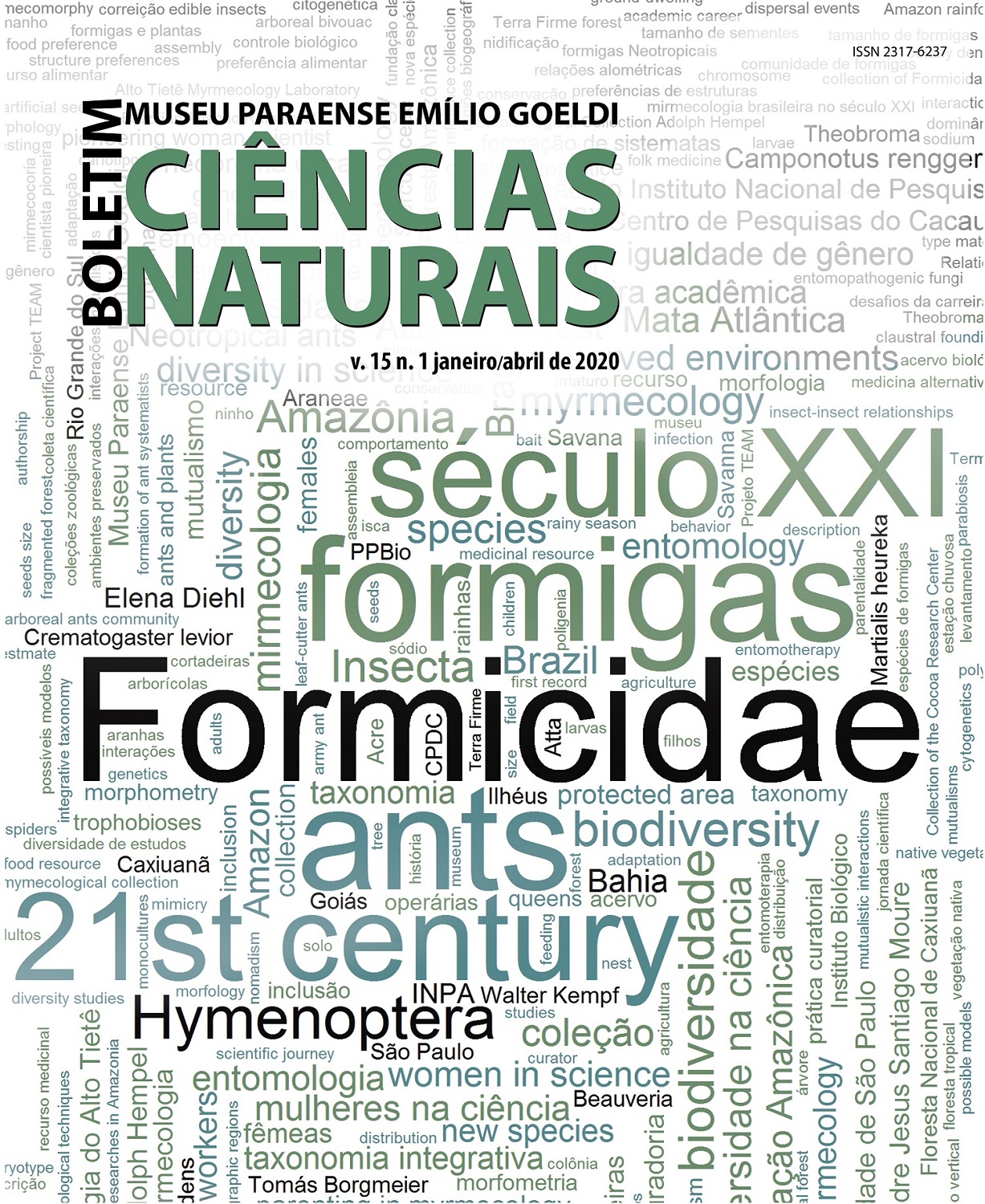The Formicidae Collection of the Cocoa Research Center (CPDC), Ilhéus, Bahia, Brazil
DOI:
https://doi.org/10.46357/bcnaturais.v15i1.293Keywords:
Taxonomy, Biodiversity, Biomes, Biogeographic Regions, Atlantic ForestAbstract
Instituted in 1990, the Formicidae Collection of the Cocoa Research Center (CPDC) has currently about 500,000 specimens, usually dry mounted, corresponding to about 4,000 nominal species and morphospecies. In addition to the general collection, there is a small collection of types and a research library within the scope of the Laboratory of Myrmecology. This laboratory being multi-institutional, the curatorship of the CPDC is currently divided between J.H.C. Delabie (CEPEC-CEPLAC and UESC) and A. Arnhold (UFSB). The Atlantic Forest biome, especially from Bahia and Espírito Santo, is particularly well represented, with series of samples from forests, mangroves, cacao, agroforestry systems, pastures and other regional crops. The collection also conserves a lot of Brazilian biological material from Amazon, Cerrado, Caatinga, and from other countries in the Neotropical Region, as well as from other Biogeographic Regions. The dynamics of incorporating biological material into the collection is detailed in the text, as well as the prospects for the development of further actions planned around the CPDC Collection, in partnership with the State University Santa Cruz (UESC) and the Federal University of the South of Bahia (UFSB).
Downloads
Published
Issue
Section
License
Publication means fully assigning and transferring all copyrights of the manuscript to the journal. The Liability Statement and
Assignment of Copyrights will be enclosed with the notice of acceptance. All the authors must sign the document and return it to the journal.








